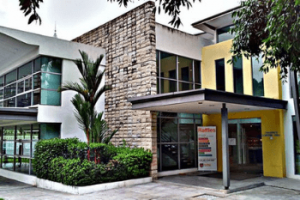There are six fields of Interior Design that you can choose from as your major. You can pick from these specializations:
Residential Interior Design
Interior designers in this field are involved first-hand in their projects. An interior designer can participate in the renovation process of different spaces (homes, real estates, home improvement stores) like building customised furniture, repositioning doors and windows, and developing blueprints and layouts.
Commercial Interior Design
Commercial buildings like restaurants, offices, studios, and museums seek interior designers to help create an interior environment that reflects their profession. From lighting to flooring, you will design aesthetically pleasing space while maintaining its functionality. Interior designers in this field work closely with architects and engineers to create a space that meets clients’ goals and budget.
Space Planning Consultancy
Space allocation, functionality and adaptability is crucial in interior design. As a space planning advisor, you develop layouts based on the requirements and functions of a space. This means planning the placement of furniture, ensuring efficient traffic-flow, and creating practical space design within a given budget.
Sustainable Interior Design
More people are moving towards a sustainable lifestyle. This means incorporating energy-saving and eco-friendly materials in the interior of homes and buildings to reduce pollution. In sustainable interior design, you can unleash your creativity by integrating wood, bamboos, and recycled materials into your designs.
Set Design
If you’ve watched the sitcom Friends, notice how the setup reflects the theme and identity of the show and its characters. This specific field is called Set Design. As a set designer, you also design sets for musical, movies, and talk shows. You are required to study scripts to understand and correctly reflect the background descriptions of the story in your designs.
Retail Design
Retail is all about shopping malls, boutiques, and shopfronts. Designing the interior for these buildings can be challenging but also fun. Whether it is the composition, display design, colour schemes, signage graphics, or lighting, your role as a retail designer is to invite potential customers to enter the designed space and hopefully to make a purchase.









